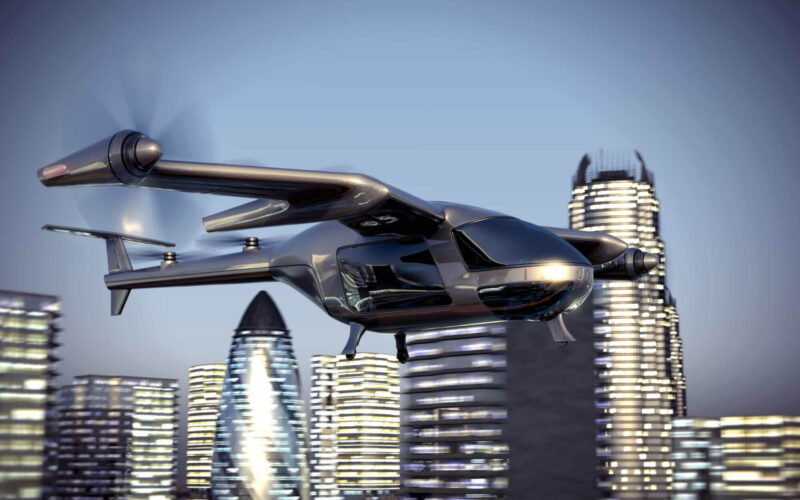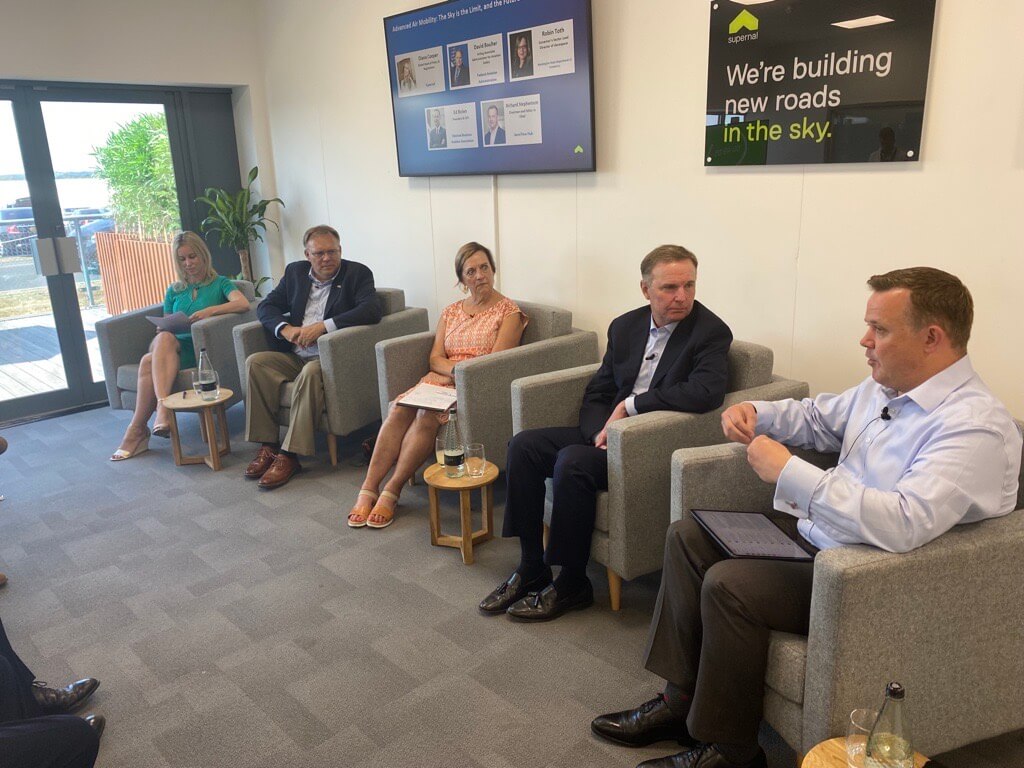Public acceptance and integration into already crowded skies are the two main challenges facing the fledgling market for flying taxis, or advanced air mobility, according to a panel of experts at the Farnborough Airshow.
Advanced air mobility (AAM) is a big topic at the 2022 edition of the Farnborough Airshow, with manufacturers including Vertical Aerospace, Wisk, Embraer and Supernal gathering to display full-scale models, test aircraft and mock-ups of cabins.
Diana Cooper, head of global policy at Supernal, highlighted that flying cars have been in the popular imagination for decades, going back to things such as the Jetsons cartoon series. Supernal was set up by Hyundai in 2021, aiming to bring its automotive knowledge to developing an electrical vertical take-off and landing aircraft (eVTOL).
“It’s time to bring that from the screens to reality,” Cooper said, adding that advances in technology, efforts to reduce carbon emissions, and a desire by people to save time were all factors coming together right now.
However, before it becomes a reality there are some thorny issues to overcome.
Ed Bolen, president & CEO of the National Business Aviation Association (NBAA), said there were three factors that needed to coalesce.
“We need to have certified aircraft; we need to have an infrastructure that can support that, but importantly, we have to have public acceptance,” he told a fireside chat at the Airshow organized by Supernal on July 19, 2022.
“It is so important that we are able to meet and talk about how this is fundamentally going to help people’s lives. It’s going to create more mobility. And it’s going to do so sustainably.”
Regulatory headaches
Certification for this new form of flying is one of the biggest challenges for regulators, manufacturers and potential operators. While Europe’s aviation safety regulator EASA has published new proposals for how air taxis can be safely operated in cities, its US counterpart, the Federal Aviation Administration (FAA), has not done so yet.
David Boulter, acting associate administrator for Aviation Safety, FAA, said the agency wanted to learn more about the space before coming up with final regulations.
“As an agency, it goes far beyond the aviation safety part of the agency. We have air traffic. We have airports. We all need to get together and open the space up. We don’t want to be the one that slows this down,” he told the discussion.
Boulter said that the FAA wanted to avoid a situation similar to that for drones, where it is constantly issuing exemptions from existing rules.
“It’s going to take us some time, but we would rather authorize things than exempt things,” he explained. “What we don’t want to do is what we are doing in the drone community today, which is writing hundreds of exemptions. That does not do the operators a lot of good and it is a very difficult process and not one that is sustainable.”
Asked about the EASA proposals, Boulter commented: “We can have differences and we can all learn. We take a little bit of a different approach, I think, than maybe EASA does. EASA kind of gets in early and then changes it. We kind of wait, get some data and then move forward. It’s a different approach.”
Boulter said that the FAA was working with counterparts across the world, including in New Zealand, Japan, the UK and Europe. “Our regulations won’t all be the same, but we certainly need to be looking at how we can find as much unity as we can across the regulatory world,” he admitted. “These are pretty complex machines and they’re going into environments that none of the CAAs have seen before…so we really need to be working collectively.”
Supernal panel at Farnborough Airshow 2022. Credit: AeroTime
Benefiting the public?
As for public acceptance, the panel agreed that more needed to be done to tell the story of AAM, with the NBAA’s Bolen saying the industry had the ability to help a lot of people and communities.
“You’re creating jobs. You’re creating technology. You’re connecting people. There’s a lot to love about this. There’s a lot to inspire people. And I think if we can collectively tell that story, then the public acceptance, the regulations should follow,” Bolen said.
He said that AAM could help to open up rural areas and allow companies to be located nearer their facilities. “You should not have to live in London, Paris, New York to have access to the global marketplace.”
Richard Stephenson, chairman and editor-in-chief of AeroTime, described AAM as the next aviation revolution during the panel discussion.
“The sooner we start to do this, the sooner we start to push it along, the sooner we start to tackle the regulatory challenges and integration challenges, the sooner the technology will become a reality for everyday transportation,” Stephenson said. “There is so much scope and opportunity, and lots of barriers to overcome lots of things to do. But the sooner we get cracking with it, the sooner we fix it.”


